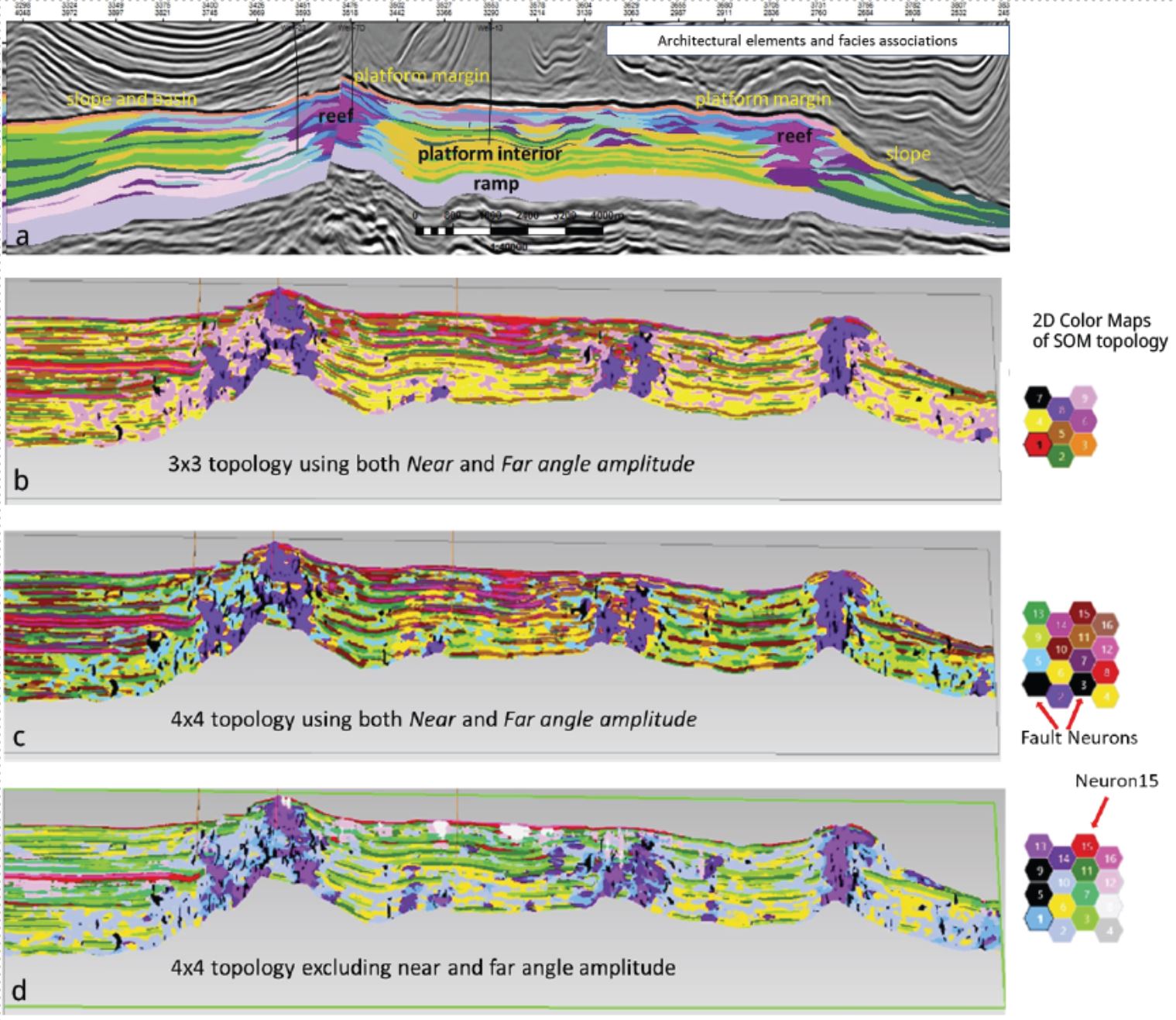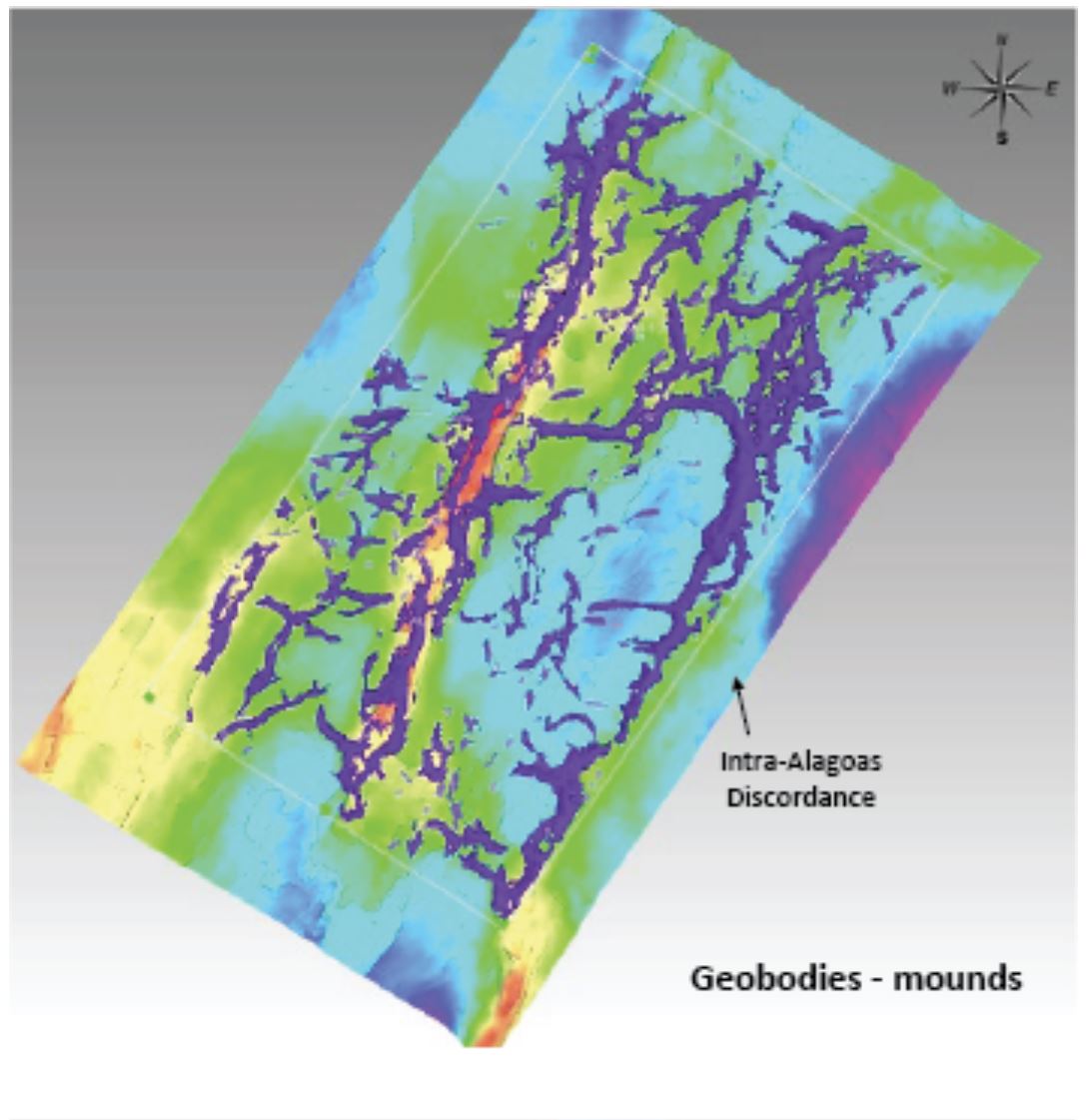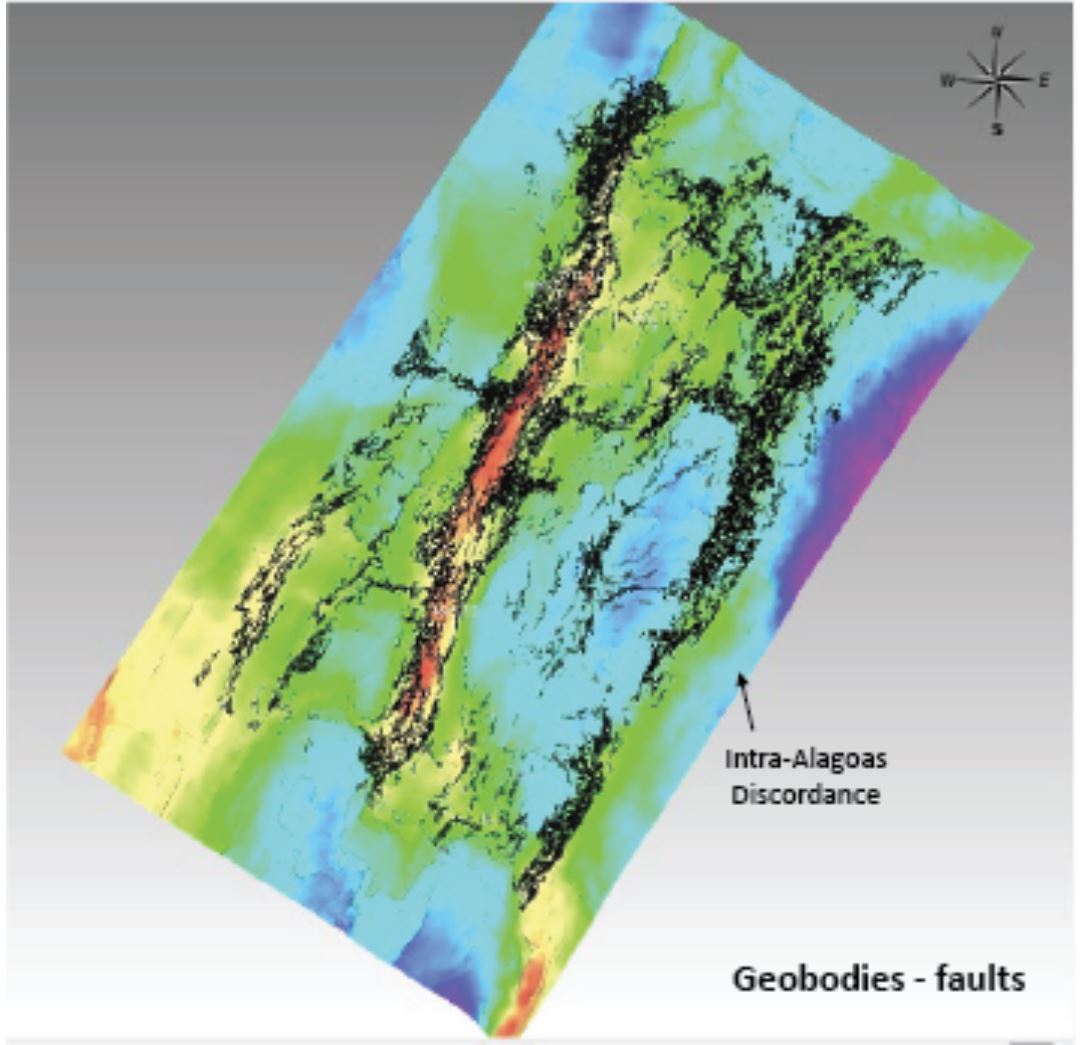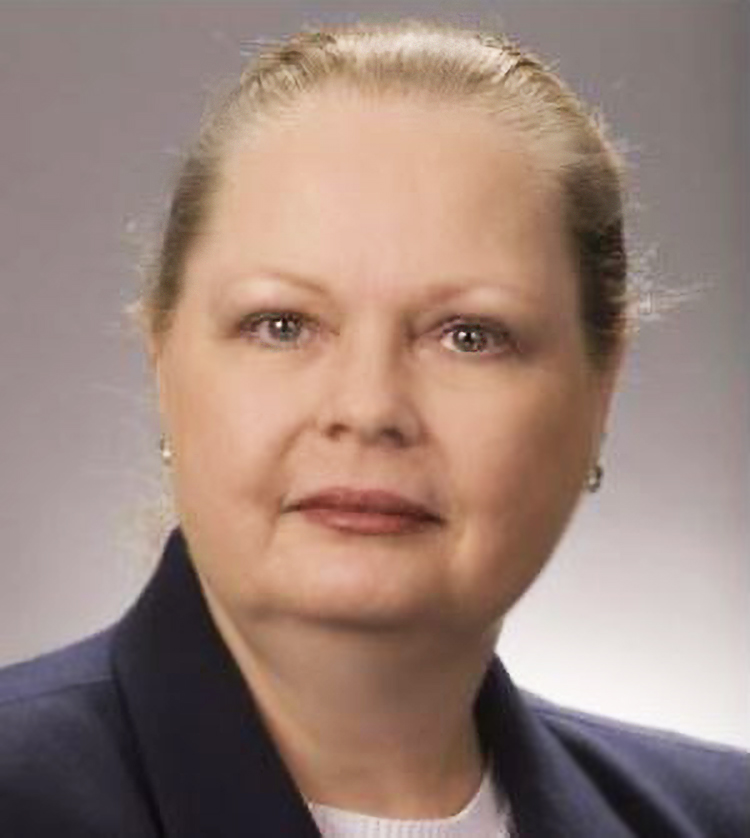Gustavo Luan Cardoso, Alexandre Kolisnyk, Edgar Davanço Bronizeski, Elita Selmara de Abreu, (Petrobras), Carolan Laudon, (Geophysical Research, LLC (d/b/a Geophysical Insights)) | SEG Poster Session | September 2022
Introduction
We present results of a multi-attribute, machine learning study over a pre-salt carbonate field in the Santos Basin, offshore Brazil. These results test the accuracy and potential of Self-organizing maps (SOM) for stratigraphic facies delineation. The study area has an existing detailed geological facies model containing predominantly reef facies in an elongated structure.
The main structure, encountered by the wells, is composed of reef facies, with a predominance of in-situ (purple colors) and reworked (dark blue colors) facies, in an elongated ridge running approximately north-south. There is another ridge structure with reef facies further east and, between the two ridges, the inter-reef facies consist of lower energy intercalated clays and carbonate detritus (yellow and green colors), which migrate to higher-energy facies at the top.
The map shows the general geometry of the two main reef structures, and the interpreted seismic amplitude section shows the primary zone of interest for the multi-attribute machine learning study. Well locations are also indicated on the map and seismic section.
Results
Figure (4) shows the SOM classifications for three different attribute combinations and topologies for one of the seismic lines interpreted for geologic facies. The facies model is shown for reference, and for each SOM, a customized 2D color map has been constructed to mimic the facies classification.
The uppermost panel (4b) shows a 3×3 winning neuron topology SOM which captured the overall facies patterns, especially for the reef and re-worked facies.

In the lows between the obvious reefs, the 4×4 classifications (4c, 4d) contained notably higher resolution and quality by comparison to the 3×3 SOM.
The middle 4×4 SOM (4c, sixteen winning neurons) panel included the near and far angle amplitudes and showed improved discrimination within the clay-rich facies (the yellow neurons represent the magnesian clays) than the bottom 4×4 SOM panel, which didn’t include the partial stack volumes.
The identification of facies with good permo-porosity is very clear, emphasizing reefs and the reworked edges. Furthermore, together with the facies, neurons that identify faults (black in the SOMs) are also present in the classification. Low energy facies were well represented (yellow and green in the 2D colormap and volume). Another highlight are pink facies (panel 4d) at the top of this interior region, representing the development of a carbonate platform at this level, which were highlighted by using the attribute of mobility factor in the SOM.
Another interesting neuron to note in the bottom panel (4d) is Neuron 15, which is interpreted as a basalt layer that isn’t present in the geological facies model.
Upon close examination, some differences between the SOM panels and the facies interpretation are evident. Still, the authors conclude that the differences will enhance a re-interpretation of the geology, such as the increase in reef facies which represent good reservoirs in some areas. Another important result is that the SOM neurons are fully 3 dimensional whereas the facies model only exists on select profiles.
Method
Attributes selected as input to the SOM analysis were based on a-priori knowledge of the attributes and their calibrations to wells. Principal Component Analysis was also run to examine attribute contribution to the zone of interest, and SOMs were tested with the PCA results. Ultimately, direct knowledge of the attributes provided the best results. The final attribute selection list was comprised of seven attributes from the full stack which were tested in combination with the near and far angle amplitude volumes: Pseudo-impedance, Sweetness, Deviation, Most Negative Curvature, Mobility Factor, Homogeneity, and Chaos.
Conclusions
We have tested an unsupervised, multi-attribute, machine learning clustering technique known as SOM to discriminate seismic facies tied to a thoroughly studied depositional environment and to discriminate high permo-porosity facies from poor quality facies. The test was conducted over a producing field with a SOM winning neuron topology that closely matched the expected number of facies in order to carefully calibrate to known geology. The SOM results yielded high-quality classifications with some deviations, which may be more accurate than the previous geologic model. The SOMs extended the geologic facies to the full 3D seismic volume, including untested areas, without resorting to manual interpretation. The SOMs were also able to classify faults within the zone of interest.
Acknowledgments
We thank PETROBRAS for the permission to publish this research.
Figures from Luan Cardoso, G., A. Kolisnyk, E.D. Bronizeski, E. Selmara de Abreu, C. Laudon, 2022, Applying unsupervised multi-attribute machine learning for 3D stratigraphic facies classification in a carbonate field, offshore Brazil: Second International Meeting for Applied Geoscience & Energy, SEG/AAPG, Expanded Abstracts.






















